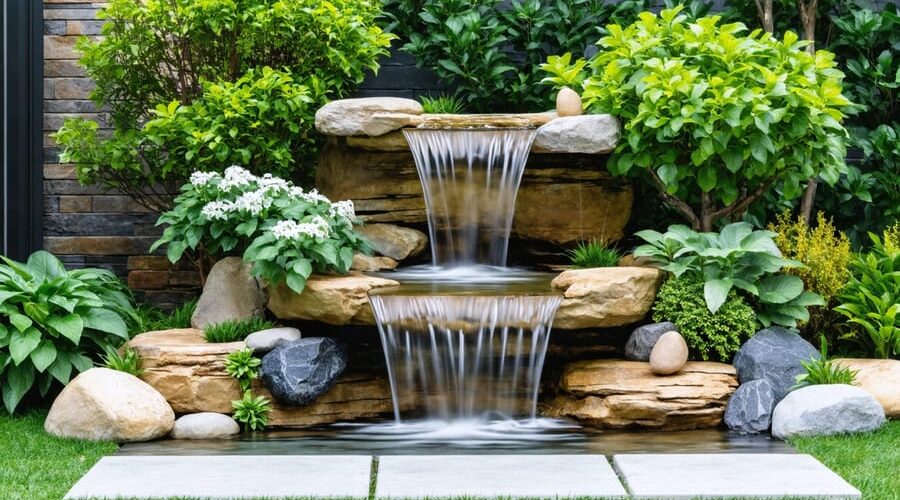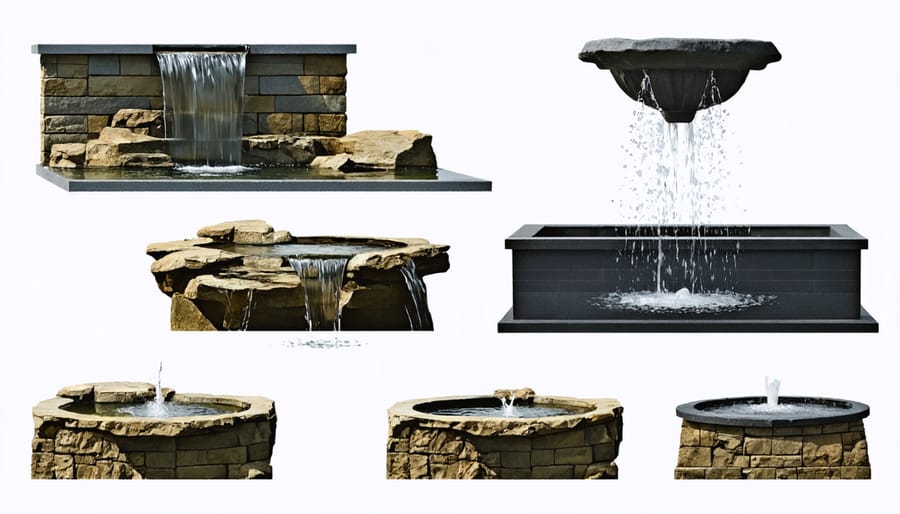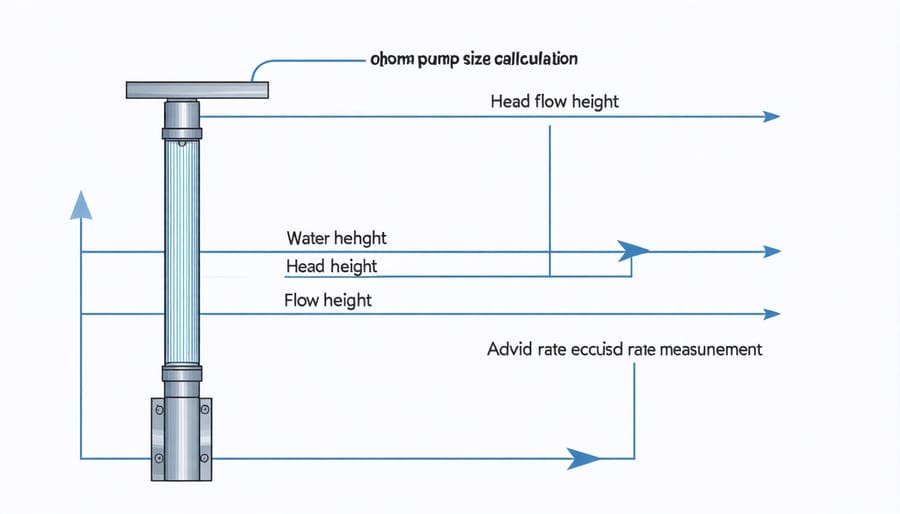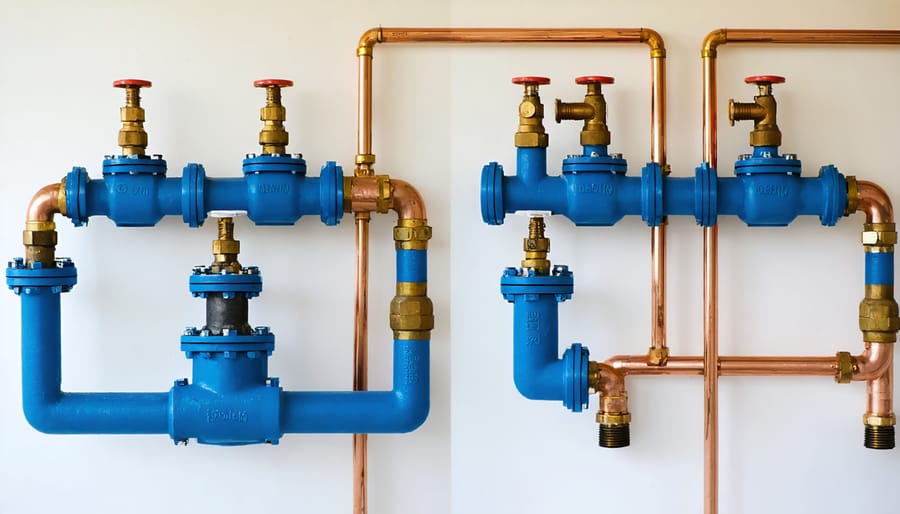
Perfect Water Feature Flow: Simple DIY Pump Setup That Actually Works
Transform your backyard into a tranquil oasis by creating a stunning DIY water feature that combines the soothing sounds of flowing water with eye-catching design. Whether you’re envisioning a simple tabletop fountain or an elaborate garden waterfall, building your own water feature offers endless creative possibilities while saving thousands compared to professional installation. This comprehensive guide walks you through selecting the perfect pump, crafting a unique design, and mastering the essential techniques for proper water flow and maintenance.
From repurposed containers to natural stone arrangements, you’ll discover how to work with various materials while avoiding common DIY pitfalls that can lead to leaks or pump failures. With basic tools and materials from your local hardware store, you can complete most water feature projects in a single weekend. Get ready to dive into the rewarding world of water gardening as we explore proven steps to create a beautiful, lasting water feature that will become the centerpiece of your outdoor space.
Planning Your Water Feature Design
Choosing the Right Location
When you design a stunning water feature, location plays a crucial role in its success. Start by considering sunlight exposure – too much direct sun can promote algae growth and increase water evaporation, while too little might limit your plant choices. Look for a spot that receives partial shade during the hottest parts of the day.
Accessibility to power sources is another key factor. You’ll need a nearby electrical outlet for your pump, preferably within 10-15 feet. Consider installing a weatherproof outdoor outlet if necessary. Also, ensure the ground is level and stable enough to support your water feature’s weight when filled.
Think about visibility from your favorite outdoor spaces. The feature should be easily viewable from areas where you spend the most time, like your patio or deck. Consider the surrounding landscape and how your water feature will complement existing elements. Lastly, keep in mind maintenance accessibility – you’ll want to reach all areas of the feature easily for cleaning and upkeep.
Determining Water Feature Style
Water features come in various enchanting styles, each requiring specific pump considerations to achieve the perfect flow. For a cascading waterfall, you’ll need a pump that can handle vertical lift and create that satisfying rush of water. Our garden waterfall techniques guide can help you master the details of achieving the perfect cascade.
For gentle fountain displays, choose a pump with adjustable flow rates to create anything from a subtle trickle to a dramatic spray. Wall fountains typically need less powerful pumps, around 250-500 GPH, while pond-less waterfalls might require 1000+ GPH for that wow factor.
Tabletop fountains work beautifully with small submersible pumps (50-100 GPH), perfect for creating peaceful indoor ambiance. For zen-inspired features like bamboo spouts or stone basins, select pumps with adjustable flow controls to achieve that perfect meditative trickle.
Remember, it’s better to choose a slightly stronger pump and adjust it down than to have insufficient flow. Consider the feature’s height, width, and desired water effect when making your selection.

Selecting the Perfect Pump
Calculating Required Pump Power
Selecting the right pump power is crucial for your water feature’s success, and it’s easier than you might think! To calculate the required pump power, you’ll need to consider two main factors: flow rate and head height.
First, determine your desired flow rate – this is how much water you want moving through your feature per hour. For a small fountain, aim for about 100-200 gallons per hour (GPH). For larger features like waterfalls, you might want 400-600 GPH or more for that perfect cascade effect.
Next, measure the head height – the vertical distance from your pump to your feature’s highest point. For every foot of height, you’ll need to add about 10% more pump power to overcome gravity. For example, if your waterfall is 3 feet high and you want 400 GPH flow, you’ll need a pump rated for at least 520 GPH to maintain good water flow at that height.
Here’s a simple formula to remember:
Required GPH = Desired Flow Rate + (Desired Flow Rate × Head Height × 0.1)
Don’t forget to factor in any horizontal distance or pipe bends, as these can reduce flow rate. When in doubt, it’s better to choose a slightly more powerful pump – you can always reduce flow with a valve, but you can’t increase it beyond the pump’s capacity.
Pro tip: Many garden centers offer adjustable pumps that let you fine-tune the flow rate, perfect for experimenting with different effects in your water feature.

Types of Pumps for DIY Features
When it comes to powering your DIY water feature, you’ll typically choose between two main types of pumps: submersible and external. Each has its own strengths and ideal applications, so let’s explore both options.
Submersible pumps are the most popular choice for smaller DIY water features. As their name suggests, these pumps work while completely underwater. They’re perfect for fountains, small ponds, and tabletop features because they’re easy to install, relatively quiet, and usually more affordable. Most submersible pumps can handle water flow rates from 50 to 500 gallons per hour, making them ideal for features up to 4 feet in height.
External pumps, on the other hand, are installed outside your water feature and are typically more powerful. They’re the better choice for larger installations like waterfalls or streams, where you need more pumping power. While they tend to be more expensive and require additional plumbing, external pumps are generally more energy-efficient and easier to maintain since you don’t need to drain the feature to service them.
When choosing between the two, consider your feature’s size, desired water flow, and maintenance preferences. For most DIY projects under 50 gallons, a submersible pump rated between 50-300 GPH will work perfectly. Just remember to always choose a pump that’s slightly more powerful than you think you’ll need – it’s easier to reduce flow than to increase it later.
Installation and Flow Optimization
Proper Pump Installation
Installing your pump correctly is crucial for a well-functioning water feature. Start by placing the pump on a level surface, ideally on top of a paving stone or brick to elevate it slightly from the basin bottom. This prevents debris from clogging the intake and helps maintain consistent water flow.
Connect your pump to the main water line using appropriately sized tubing. For most small to medium features, flexible PVC tubing works well – just ensure it matches your pump’s outlet diameter. Secure all connections with stainless steel hose clamps to prevent leaks. If you’re using rigid PVC pipe, apply PVC primer and cement to create watertight seals at each joint.
Before final placement, wrap the pump’s power cord around a stake or pole near the basin’s edge, creating a “drip loop.” This loop prevents water from running down the cord into your electrical outlet. Always use a GFCI-protected outlet for safety, and never submerge electrical connections.
Test the pump before covering or concealing any plumbing. Run it for several minutes to check for leaks and ensure proper water flow. If you notice any issues, address them now – it’s much easier than fixing problems later. Adjust the pump’s flow rate using its built-in controller if available, or install an inline valve for precise control.
For optimal performance, position the pump where you can easily access it for maintenance. Consider installing a quick-disconnect fitting in the plumbing line to make pump removal simpler. Remember to keep the pump completely submerged during operation to prevent damage and ensure proper cooling.

Flow Control and Adjustment
Getting the perfect flow in your water feature is crucial for creating that soothing atmosphere you’re after. Start by testing different flow rates using your pump’s adjustable settings or a valve attachment. A good rule of thumb is to begin with a lower flow and gradually increase it until you achieve your desired effect.
For waterfalls, aim for a sheet-like flow that creates a pleasant trickling sound without splashing. You can adjust this by adding flow regulators or repositioning rocks to create natural-looking cascades. Remember, the sound will be more prominent at night, so consider how your nighttime water feature effects will impact your outdoor space.
To minimize splashing, place larger rocks at the base of falling water and ensure your reservoir is deep enough to prevent water from hitting the bottom directly. If you notice unwanted turbulence, try adding water-smoothing devices like flow plates or spillway bars.
Don’t forget to account for wind direction when positioning your feature. A slight angle adjustment can make a big difference in preventing water loss and maintaining consistent flow. Regular maintenance of your pump and filters will also help maintain optimal flow throughout the seasons.
Finally, consider installing a timer or remote control system for easy adjustment of flow rates at different times of day, giving you complete control over your water feature’s performance.
Troubleshooting Common Issues
Even the best-planned water features can encounter issues, but most are easily fixed. If your pump isn’t producing enough flow, first check for kinked or bent tubing that might be restricting water movement. Clean or replace any clogged filters and remove debris from the pump intake. For weak water flow, ensure your pump size matches your feature’s requirements – bigger isn’t always better.
Gurgling or splashing sounds often indicate the water level is too low. Simply top up the reservoir and check for leaks around joints or seams. If you notice excessive water loss, inspect silicon seals and patch any cracks with waterproof sealant.
When your pump stops working completely, check the power supply and GFCI outlet first. Sometimes, air can get trapped in the pump – try tilting it slightly while submerged to release air bubbles. If the pump makes unusual noises, it might need cleaning or have debris caught in the impeller.
Green water or algae growth? Add aquatic plants to compete with algae for nutrients, or consider installing a small UV clarifier for crystal-clear water.
Maintenance Tips for Optimal Performance
Regular Cleaning Schedule
To keep your water feature running smoothly, establish a regular cleaning routine for your pump. Every two weeks, remove any debris like leaves, twigs, or algae from the pump intake and filter. This simple maintenance prevents clogs and ensures consistent water flow.
Monthly, take time to do a more thorough cleaning. Turn off the pump, remove it from the water, and gently brush off any buildup using a soft-bristled brush. Pay special attention to the impeller – that’s the rotating part that moves the water. If you notice any mineral deposits, soak the pump in a solution of equal parts white vinegar and water for about an hour.
Every season, perform a deep clean. Disassemble the pump following your manufacturer’s instructions and clean each component carefully. Check for wear and tear on parts like O-rings and seals, replacing them if necessary. During winter, if you live in a cold climate, remove the pump and store it indoors to prevent freeze damage.
Remember to maintain proper water levels and use appropriate water treatments to prevent algae growth. This helps reduce the cleaning burden on your pump. If you notice reduced water flow or unusual noises, don’t wait for your scheduled cleaning – address these issues immediately to prevent pump damage.
Keep a maintenance log to track your cleaning schedule and any repairs. This helps you stay on top of pump care and extends its lifespan, ensuring your water feature remains a beautiful focal point in your space.
Seasonal Care Guidelines
Keeping your DIY water feature running smoothly throughout the seasons requires specific care and attention. Check out our comprehensive year-round maintenance guide for detailed tips and tricks.
During spring and summer, regularly top up water levels to compensate for evaporation and check for algae growth. Clean the pump filter every few weeks and remove any debris that might clog the system. Adding aquatic plants can help maintain water quality naturally.
As autumn approaches, remove fallen leaves frequently to prevent them from decomposing in the water. Install a protective net over your feature to catch debris if it’s located near trees. Check the pump’s performance more often during this season, as falling organic matter can affect water flow.
In winter, you’ll need to decide whether to run your feature year-round or winterize it. For continuous operation, ensure the pump keeps water moving to prevent freezing. If winterizing, drain the system completely, clean the pump thoroughly, and store it in a dry, frost-free location. Remove any delicate components that could crack in freezing temperatures.
Remember to inspect electrical connections seasonally and ensure your pump housing remains weatherproof. Regular maintenance throughout the year will extend your water feature’s life and keep it looking beautiful in every season.
Creating your own DIY water feature is an exciting and rewarding project that can transform any outdoor space into a peaceful oasis. As we’ve explored throughout this guide, you don’t need to be a professional landscaper to build a beautiful water feature – just careful planning, the right materials, and a dash of creativity. Remember to start small if you’re a beginner, and don’t be afraid to experiment with different designs and water flow patterns.
The key to success lies in proper preparation: choosing the right location, selecting appropriate materials, and installing a reliable pump system. Take your time with each step, double-check your measurements, and ensure all connections are secure before adding water. Regular maintenance will keep your feature running smoothly and looking beautiful for years to come.
Now that you have all the necessary information, it’s time to start bringing your vision to life. Whether you’re creating a simple fountain or an elaborate cascade, the sound of flowing water will soon be enhancing your outdoor space. Don’t forget to share your creation with friends and family – your success might just inspire others to create their own water features!
